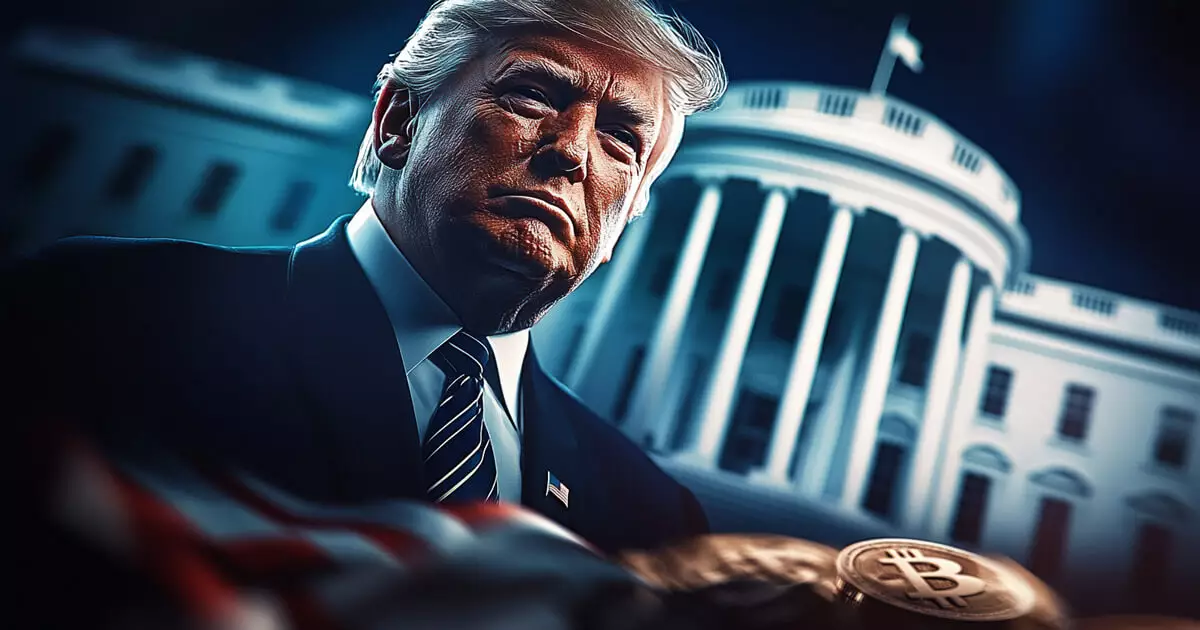As the landscape of global finance transforms, a significant political event has set the stage for what many are terming a “Golden Age of Crypto.” The recent victory of Donald Trump in the U.S. presidential elections has spurred discussions among crypto enthusiasts and financial analysts alike regarding the potential for a more favorable regulatory environment for cryptocurrencies. Matthew Hougan, CIO of Bitwise, articulated in a memo that this administration might usher in pivotal changes in the approach towards digital assets, shifting from a restrictive regulatory framework to one that encourages growth and innovation.
The implications of political leadership on financial ecosystems should not be underestimated. With Trump’s campaign highlighting a favorable stance towards cryptocurrencies, market anticipation is palpable. This shift has been reflected in the significant uptick of cryptocurrencies, notably Bitcoin, which reached a record price of approximately $75,650 shortly after the elections. Such dramatic movements in market prices underscore the potent interplay between political events and market sentiment.
Despite Bitcoin’s stellar performance, it is essential to note that not all cryptocurrencies have experienced the same upward momentum. Hougan pointed out that the recent surge in Bitcoin prices begets a cautionary tale for investors. The disparity in performance among various cryptocurrencies indicates a potential misalignment between market perception and the underlying fundamentals of individual projects. As investors rush to capitalize on what may appear to be universal bullishness, a prudent approach is warranted.
It’s valuable to reflect on the nature of crypto investments in a transitioning regulatory climate. The SEC’s previous enforcement-heavy stance often hampered innovation within the sector. Through lawsuits and a lack of clear guidelines, many initiatives faced existential threats. Hougan’s assertion that the regulatory landscape has effectively constrained the crypto space echoes sentiments within the industry, emphasizing the need for clarity and support from governing bodies.
Central to Hougan’s perspective is the expectation that the incoming administration will not just soften regulatory measures but potentially overhaul the regulatory approach to cryptocurrencies fundamentally. A significant shift would involve appointing regulators who view crypto not merely as a challenge to traditional finance but as an opportunity for innovation and economic growth. This pivot is critical in setting a conducive environment for institutional investment, which has shown robust interest in Bitcoin and other digital currencies.
Moreover, Hougan’s insights regarding institutional inflows into Bitcoin exchange-traded funds (ETFs) paint a promising picture for the future of cryptocurrency. The influx of capital demonstrates not only a moment of speculation but also a burgeoning acceptance of digital assets as an integral component of diversified portfolios.
The economic backdrop, characterized by rising U.S. debt levels and potential interest rate cuts, further elevates Bitcoin’s stature as a viable asset. These macroeconomic factors play an essential role in shaping investor perspectives, particularly as individuals and institutions seek refuge in what they perceive as inflation-resistant assets. Hougan’s observation that the upcoming Bitcoin halving in April 2024 amplifies this narrative cannot be overlooked. Historical patterns indicate that halvings often precede significant price surges, attracting increased interest from investors.
However, amid this optimism, there exists a note of caution. Hougan highlights the importance of discernment in crypto investments. Not all projects are destined to thrive even in a more favorable climate. As the cryptocurrency sector matures, it faces the natural attrition of projects that do not deliver on their promises or lack fundamental viability. Thus, a disciplined investment strategy becomes paramount.
While the potential for a more supportive regulatory environment looms large, it is accompanied by challenges that require careful navigation. The backdrop of institutional investment coupled with economic indicators creates a fertile ground for growth within the cryptocurrency market. Nevertheless, investor acumen will be necessary to distinguish between viable projects and those likely to falter in a competitive landscape.
Ultimately, for early adopters and informed investors, the environment appears to be more promising than ever. The ripple effects of political, regulatory, and economic shifts will undoubtedly shape the future of cryptocurrency, making it crucial for stakeholders to stay informed and strategically engaged as the sector evolves.



















Leave a Reply